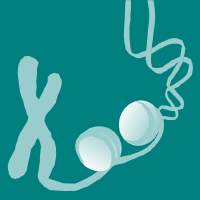Topic Menu
► Topic MenuTopic Editors


Stem Cell Differentiation and Applications
Topic Information
Dear Colleagues,
Stem cells have been used to generate new cells to replace damaged organs or tissues, and to evaluate the cell-type-specific disease mechanisms and genetics involved in the development of diseases and disorders. Pluripotent stem cells (PSCs) allow researchers to create in vitro disease modeling using patient-specific PSCs and to develop patient-specific therapies. We are pleased to invite you and your co-workers to submit your original research articles reporting on stem cell-based disease modeling, engineering, and therapy, including the molecular and pathophysiological mechanisms underpinning its development. We encourage the submission of original manuscripts and review articles spanning basic to clinical research, including pharmacological interventions to prevent and/or ameliorate disease.
Dr. Hiroyuki Hirai
Dr. Haiyun Pei
Dr. Atsushi Asakura
Topic Editors
Keywords
- embryonic stem cells
- induced pluripotent stem cells
- organoid, somatic stem cells
- stem cell differentiation
- stem cell therapy
- tissue-specific stem cells
Participating Journals
| Journal Name | Impact Factor | CiteScore | Launched Year | First Decision (median) | APC |
|---|---|---|---|---|---|

Cells
|
5.1 | 9.9 | 2012 | 17.5 Days | CHF 2700 |

Epigenomes
|
2.5 | 3.8 | 2017 | 18.7 Days | CHF 1500 |

Genes
|
2.8 | 5.2 | 2010 | 16.3 Days | CHF 2600 |

International Journal of Molecular Sciences
|
4.9 | 8.1 | 2000 | 18.1 Days | CHF 2900 |

International Journal of Translational Medicine
|
- | - | 2021 | 24 Days | CHF 1000 |

MDPI Topics is cooperating with Preprints.org and has built a direct connection between MDPI journals and Preprints.org. Authors are encouraged to enjoy the benefits by posting a preprint at Preprints.org prior to publication:
- Immediately share your ideas ahead of publication and establish your research priority;
- Protect your idea from being stolen with this time-stamped preprint article;
- Enhance the exposure and impact of your research;
- Receive feedback from your peers in advance;
- Have it indexed in Web of Science (Preprint Citation Index), Google Scholar, Crossref, SHARE, PrePubMed, Scilit and Europe PMC.

